While most brick-and-mortar companies are focused on growing their e-commerce, digital shopping giant Amazon continues to expand its online retail genius into the real world. The company now has four different types of physical stores throughout the continental United States.
In December, we asked members of the MerchantWords team to do a little holiday shopping and learn as much as they could about Amazon’s various locations.
The Amazon Pop-Up
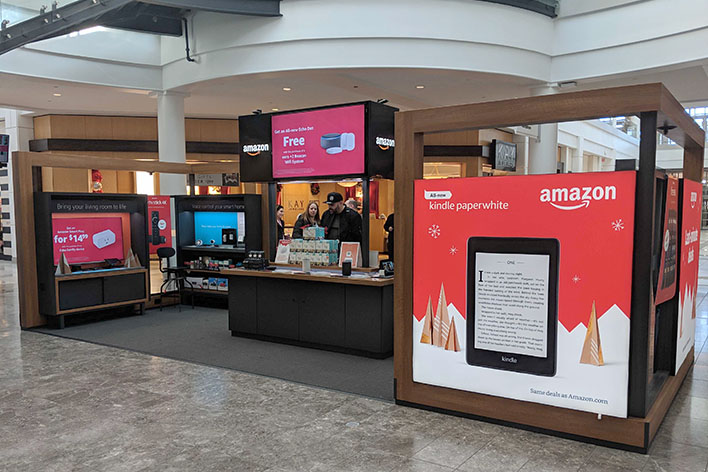
Several team members stopped by Amazon Pop-Ups. These temporary kiosks are located in malls and department stores throughout the country and primarily focus on tech products and gadgets. The experience allows shoppers to handle and test out higher-priced items like Kindles and Echo smart speakers. Unsurprisingly, the majority of products featured at these locations center around Amazon’s voice-activated assistant, Alexa.
At the Pop-Up locations we visited, shoppers can interact with Alexa on Echo devices without committing to a purchase. This gives Amazon the opportunity to wow potential customers with Alexa’s skills, or entertain them with a couple of silly jokes. Pop-Ups also give customers a chance to experience the different gadgets and products that can be used with Alexa and have any questions addressed by an Amazon associate on the spot.
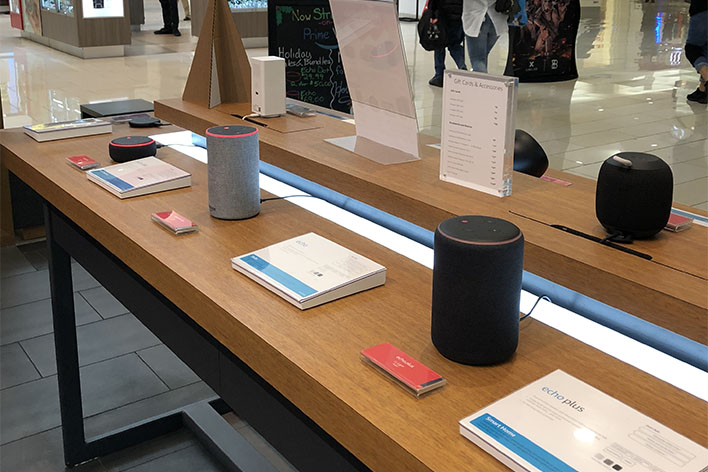
Since this type of store is focused on Amazon’s advanced technology, the average price point was generally over $30. When asking for less expensive items, most of our team members were shown the Echo Dot (on sale at $29.99) or a wall of AmazonBasic accessories. One of them also bought a smart light bulb (which also works with Alexa). She says it is “life-changing.”
Amazon could be using its Pop-Ups to counter Google. While Amazon still leads the market, many of its competitors are catching up – Google’s smart speaker, Google Home, increased sales by 187% from 2017-2018, and shipped more devices than Amazon in Q2 and Q3 of 2018.
Though the majority of Amazon’s Pop-Ups focus on technology, there were also Pop-Up Holiday Toy Stores scattered throughout the US. At these stores, you could find many different popular toys from Disney and Lego, including the talking Chewbacca doll featured prominently on Amazon’s homepage in November and December.
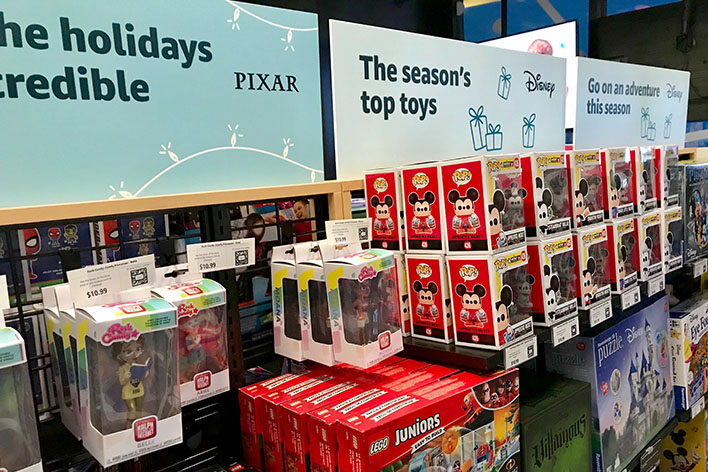
A majority of the toys we saw were targeted at children ages 5 to 10 years old and ranged in price from $25-$150. One team member was assured by the Amazon associate that they would receive the absolute lowest retail price, with digital price tags making this possible. These digital tags display the Prime price and non-Prime price and allow Amazon to change prices in physical locations as they change online.
You can also return Amazon online purchases at some of their Pop-Up locations. Our team loved this feature, as it eliminated the additional fees for return shipping.
Of course, there’s always room for improvement. While the majority of our team’s reviews were positive, the general consensus was that the product selection at each Amazon Pop-Up was limited. Several team members thought the experience could be improved with more diversity among the categories represented, or even by having the option to use the scan-and-go technology that’s available at other Amazon retail locations.
Amazon Treasure Truck
In various metropolitan areas throughout the United States, Amazon also has a unique traveling pop-up called the Treasure Truck. Only Prime members who have signed up to receive text notifications can purchase the truck’s mystery item.
Amazon picks a random date and item to be on the truck for a discounted price. There are limited quantities of the product, so shoppers have to quickly schedule a time and pick-up location to get their prize.
Buyers must arrive within their short window to flash their post-purchase QR code and pick up the item of the day. The products vary wildly – our team members picked up everything from free breakfast bars and Nintendo Switch games, to fresh steaks and cuts of fish.
Amazon Books
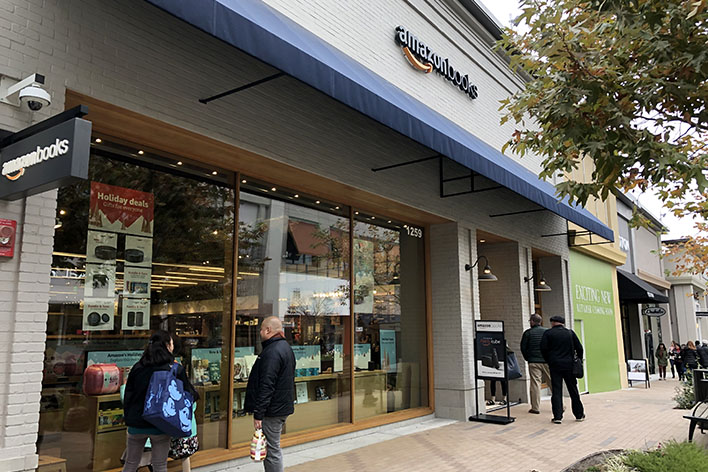
Given Amazon’s beginning as an online bookseller and that books and movies continue to account for 8% of their sales, it makes sense that they’ve brought some of their book collection off the internet and into the real world. At Amazon Books throughout the United States, shoppers can not only find books, but also Amazon devices like the Kindle, and associated merchandise. During the holiday season, you could find gift wrapping materials alongside stocking stuffers like colored pencils and headphones, larger gift options like board games, and toys.
While the store itself is set up like many traditional bookstores, there are some noticeable differences. The most notable is that there are no price tags! Rather than conventional tags or the electronics tags used in other stores, Amazon Books use barcodes.
With the assistance of the Amazon app, shoppers can scan a barcode and see the price of the item, allowing Amazon to provide customers in-store with the same pricing they see online. Prime members receive a discounted price, just like they do while shopping on Amazon’s website.
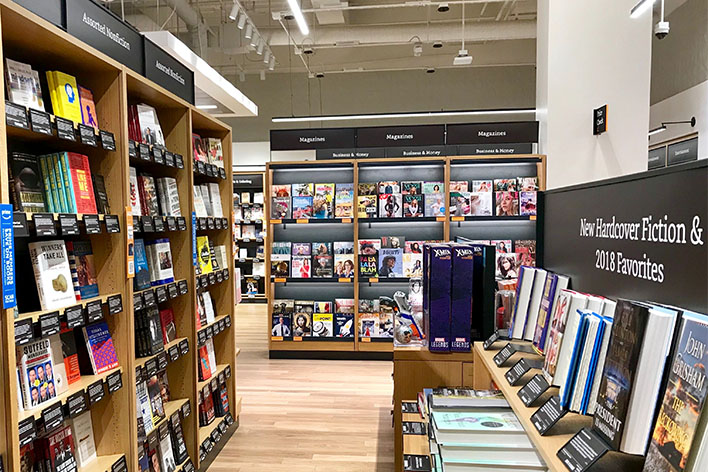
The tag that displays the barcode also contains a review from an Amazon customer (or a notable fact if it’s a classic book), the book or product’s star rating, and the number of Amazon reviews it received. For book lovers who must-read reviews before making a purchase, this is a definite plus.
This isn’t consistent across all Amazon bookstores. Some bookstores use digital price tags like the ones at the Holiday Toy Pop Up. These tags display the Prime price, the non-prime price, and the star review rating.
Amazon incorporates other elements that frequent online shoppers will be familiar with their bookstores. For example, on an Amazon.com listing, you’ll see the star rating, reviews, and prices as we mentioned above. You’ll also see a “recommended” section near the bottom of the page. Amazon has essentially taken all the information from that webpage and successfully transitioned it into a physical space. There are curated sections based on selected books and authors, where an entire section is devoted to similar books. There are also several “If You Loved This, Try This” sections throughout the store. We found some great new titles and series among these book recommendations.
One of our team members found the “Most Wished For Books” to be extremely useful. She thought that this section, based on Amazon customer wish lists, provided more gift ideas than any other section in the store.
Once customers have chosen their items, they check out on tablets operated by Amazon employees. Scan-and-go payment is accepted, along with traditional payment methods. If you’re confused about how to find this function in the app, don’t worry. The Amazon employees are incredibly helpful and there are in-store signs to guide you along the way. If you’re a Prime member, you can see how much your membership saves you during your shopping trip.
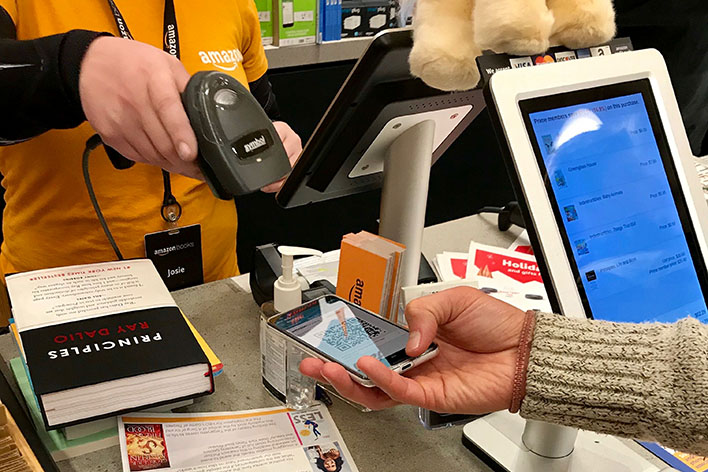
Our team had mixed feelings about the Amazon Books experience. Some loved it because they received more information about books that interested them, which allowed them to make a more educated purchase. Others were overwhelmed by the overload of information. They felt easily distracted by the front-facing book covers on the shelves and couldn’t easily find a book that suited their needs.
Overall, Amazon Books had more options across different categories than the Amazon Pop-Up. In addition to being able to interact with a wider range of Amazon’s products, our team enjoyed handling and skimming through the book selection in-person, with options for the whole family, ranging from children’s literature to recent releases.
Amazon 4-Star
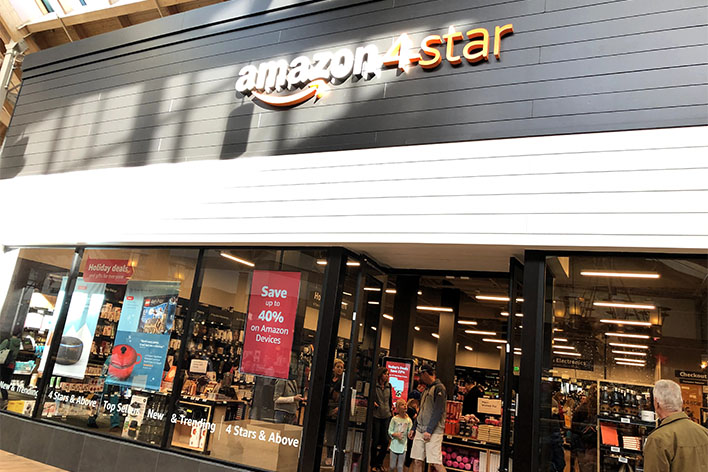
The most recent addition to the Amazon brick-and-mortar family is the Amazon 4-Star store. This retail shop contains a myriad of items, and every single one must have a rating of four stars or above on Amazon to be in the store (hence the name). At the time of publication, there are only three stores open: one in New York, NY, one in Denver, CO, and one in Berkley, CA.
If Amazon Books can be described as a listing brought to life, Amazon 4-Star is like walking through an entire website. Almost every category on Amazon is represented in-store, from greeting cards to children’s toys. Amazon also highlights some of its new categories, like LaunchPad, a category dedicated entirely to start-up companies. There’s even a whole section devoted to Harry Potter (a favorite of the MerchantWords team).
Amazon utilizes more than just customer ratings when selecting merchandise for this store. There was a prominently featured table for “Most Wished for on Amazon.com” and another that highlighted “Top Sellers in Sports & Outdoors.” It’s important to note that we visited the location in Denver. While we can’t say for sure, it’s likely the 4-Star stores in San Francisco and New York are highlighting different categories.
Throughout the store, digital price tags display prices that can be adjusted as they change online. You can see the Prime price and the discount Prime members receive on that product, along with its Amazon rating and the number of reviews. If you decide you want to join the Prime lovefest, the cashier will be more than happy to help you sign up at checkout.
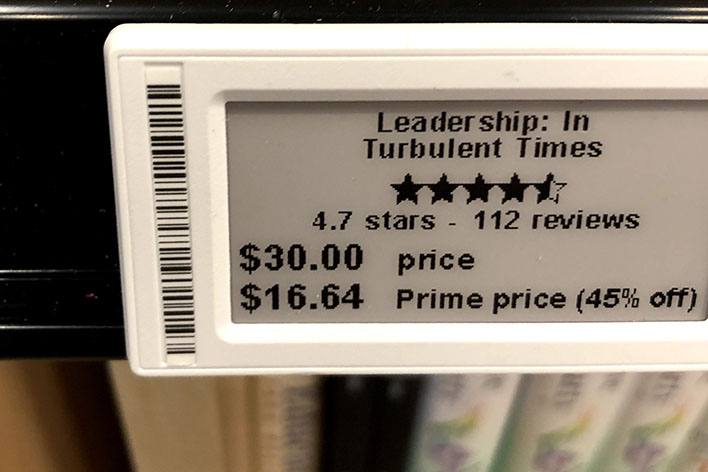
Once you find a product you like, the checkout process is easy. Just like Amazon Books, customers can pay via the Amazon app or other payment methods and the employees are just as helpful. At the 4-Star we visited, cashiers were encouraging shoppers to try Amazon's other services, offering customers a free trial of Audible or Amazon Music before completing the transaction.
With so many different products and categories available, it’s easy to get overwhelmed at this store. While we would recommend going in with a specific idea in mind, we did find some great products while browsing the shelves. Plus, who doesn’t love spending five minutes in the candle section?
Collectively our team agreed the best part of Amazon’s in-person stores was the ability to touch and try products to avoid any uncomfortable mishaps. It proved to be an excellent stop for holiday gift shopping and some folks picked up a little present for themselves, too.
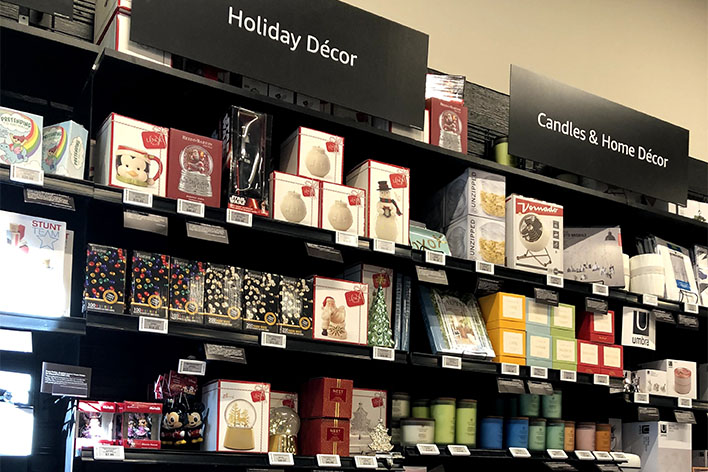
We Missed One
There is one more Amazon store that we didn’t make it to, AmazonGo. This cashier-less store first started on Amazon’s campus in Seattle and is slowly expanding across the United States. Focused on quick snacks and groceries, AmazonGo uses sensors and cameras to track which items customers pick up and automatically charges their Amazon account when they exit.
There are currently stores in Seattle, San Francisco, and Chicago. We’ll be in Chicago for RetailX and are planning on stopping by. Check out our blog in June for our thoughts!
More Physical Retail?
Amazon is just beginning to explore the possibilities of brick-and-mortar locations, with 7.5% of their third-quarter revenue coming from physical stores. Who knows what they’ll think up next? While brick-and-mortar is generally viewed as a more traditional take on retail, Amazon isn’t bound by rules of preconception. One thing is for sure – Amazon isn’t done changing how and where we shop.

